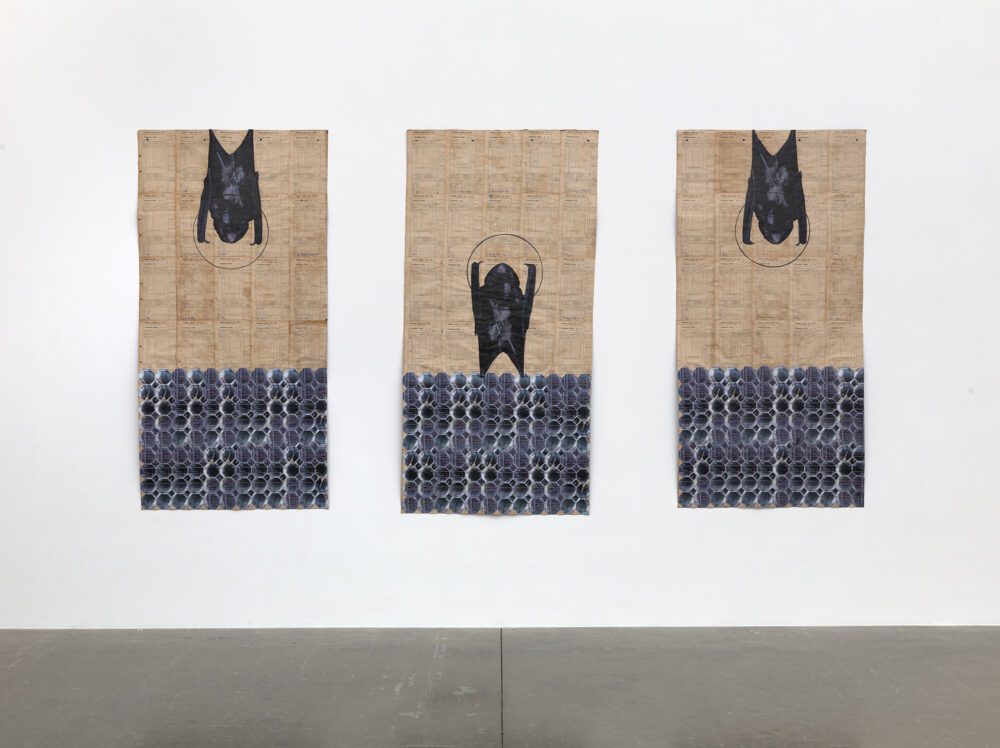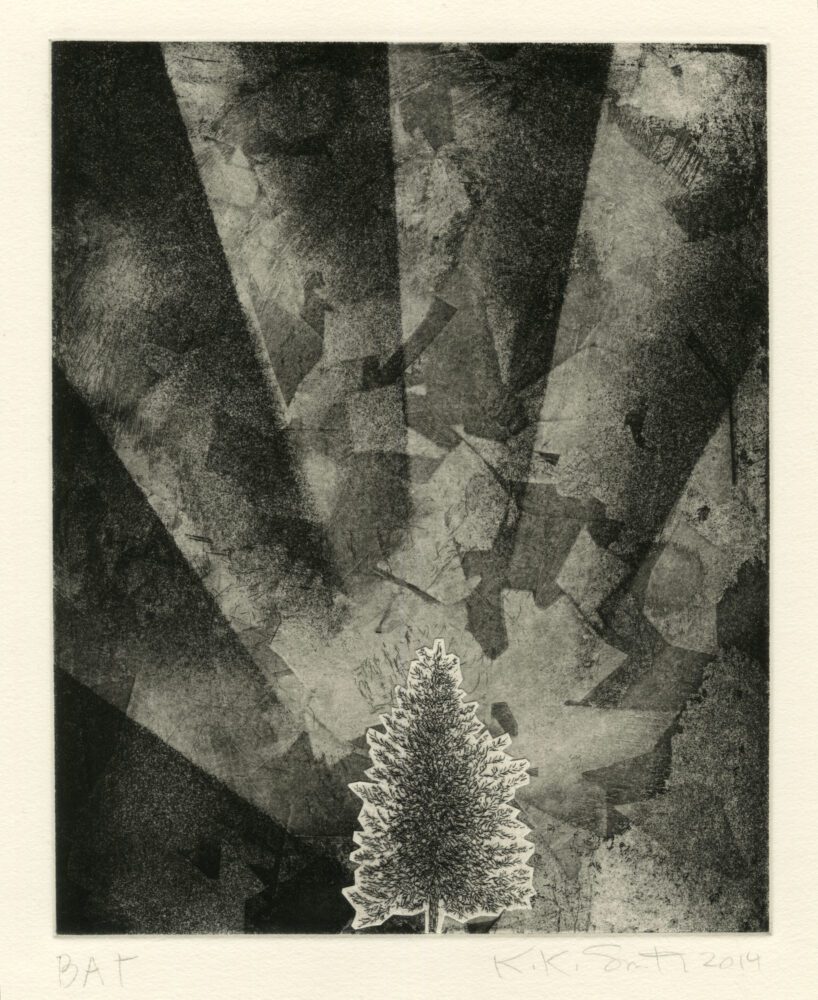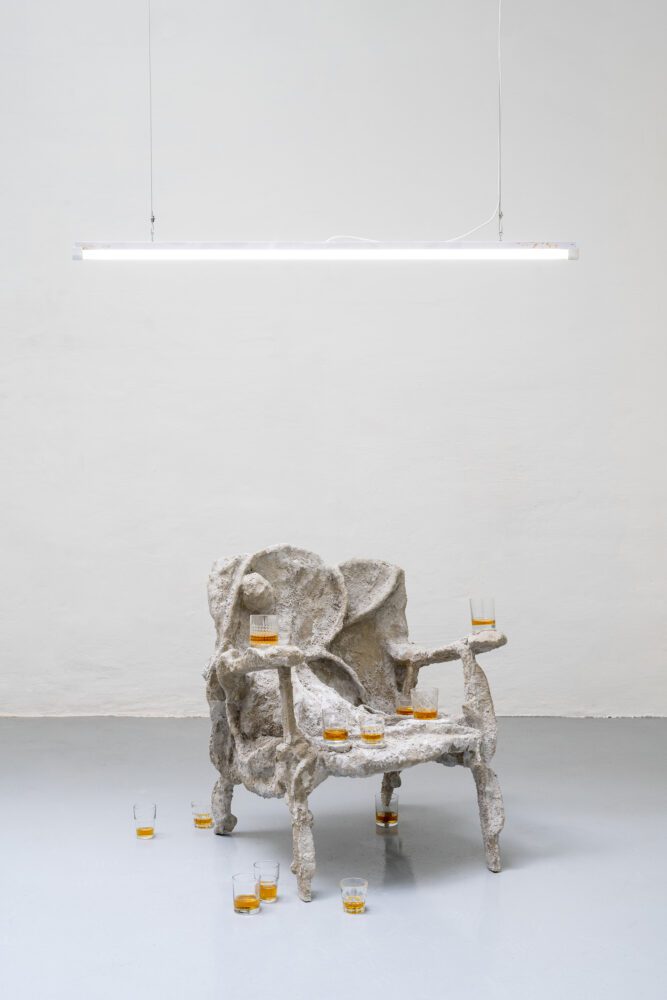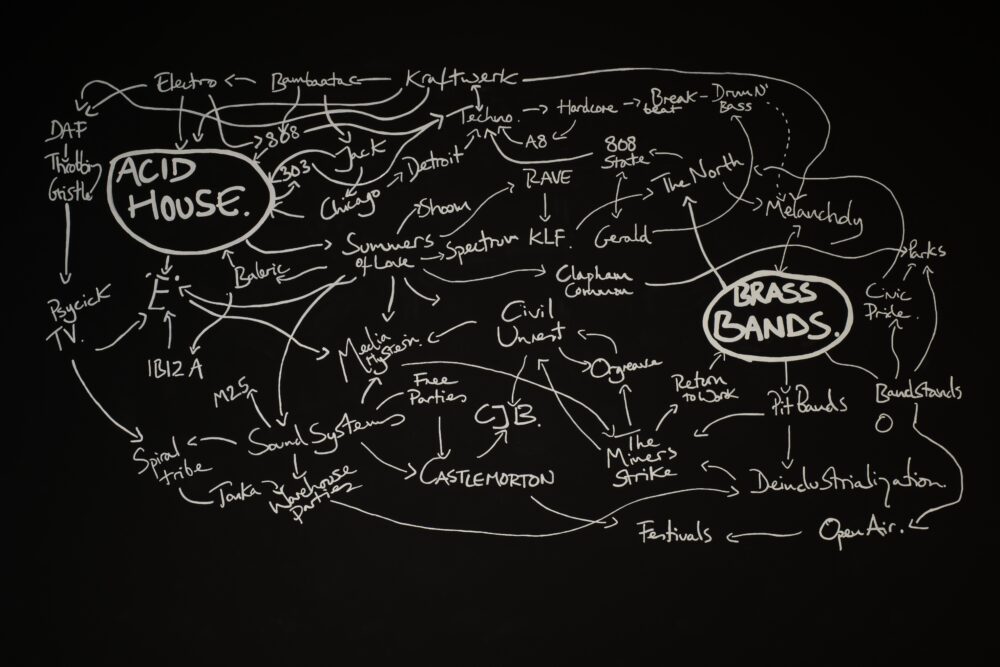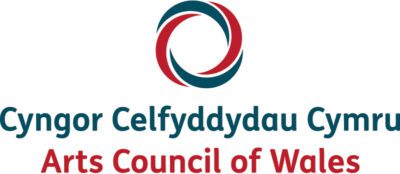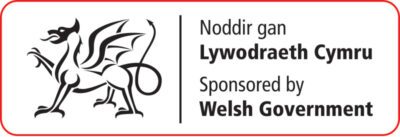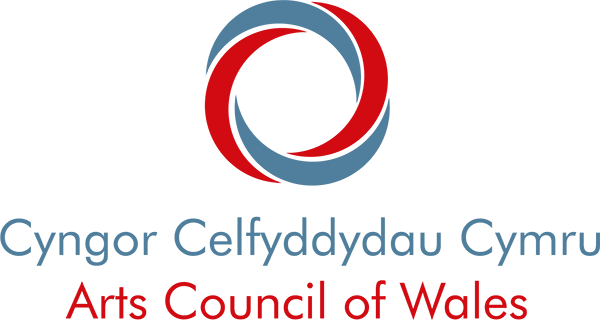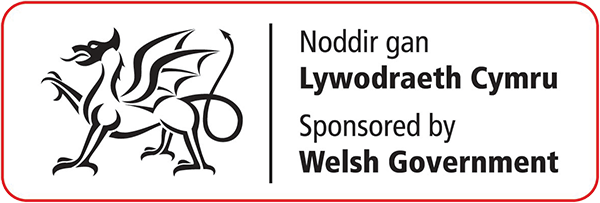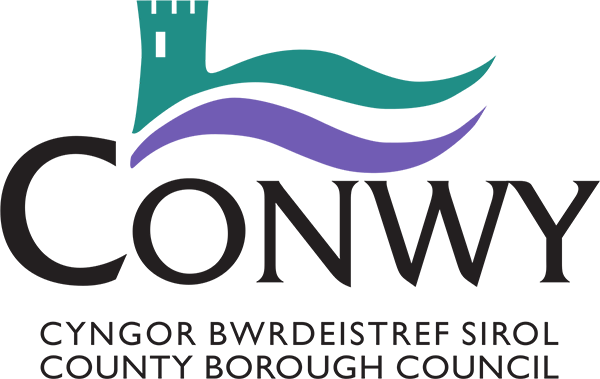Exhibition
Temporary Atlas: Mapping the Self in the Art of Today presents a selection of works that explore an alternative, complementary idea to cartography, the traditional science or practice of drawing maps.
The 17 cartographer-artists of Temporary Atlas investigate their perceptions using a traditional approach to mapping but expand it along unconventional paths. They reflect upon identity, spirituality, the subconscious, emotions, physical and mental sensation, and challenge the methods and rules we use to interpret such maps.
Each of us experiences, judges and assigns our personal priorities based upon our needs and context, and these priorities have been tested by the global pandemic.
The works on display propose perceptive and physical maps that provide insight into the artists’ personal experiences, whilst evoking mental landscapes within which the viewer can orientate themselves; worlds beyond objective geographical coordinates.
Temporary Atlas suggests ways in which we can try to make sense of our new circumstances and aims to deepen the dialogue on personal experience in relation to the society in which we now live.
Curated by our Director, Dr Alfredo Cramerotti, Temporary Atlas, includes works by artists Sanford Biggers, Seymour Chwast, Jeremy Deller, Sarah Entwistle, Enam Gbewonyo, Rochelle Goldberg, Oliver Laric, James Lewis, Ibrahim Mahama, Paul Maheke, Matt Mullican, Otobong Nkanga, Kiki Smith, Walid Raad and specially commissioned work from three Welsh artists Manon Awst, Adéolá Dewis and Paul Eastwood.
This exhibition has been supported by the Arts Council Wales, Fondazione Imago Mundi and Fondazione Benetton Studi e Ricerche.
Artist profiles and statements
Adéọlá Dewis
Adéọlá is a diaspora artist, living and working in Cardiff. Originally from Trinidad and Tobago, she is interested in ritual, folk and indigenous cultural performances. Her practice involves drawing, painting, performance and writing. She is particularly drawn to performances of transformation (as in Carnival and masquerade) as well as the making of sacred spaces. Adéọlá’s work usually explores discourse around identity, diaspora and ritual. These are apparent in her funded arts projects, including:
Mama dat is mas’ http://mamadatsmas.blogspot.com/ – looking at masking, ritual and re-presentation;
Mama Mas’: conversations for Transformation http://masmama.blogspot.com/ – looking at re-presenting experiences of motherhood;
Play Yuhself http://playyuhselfexp.blogspot.com/ – performance experiment exploring processes of accessing ‘other’ aspects of self;
and Route to Roots http://routetoroots2017.blogspot.com/ – artist residency looking at carnival arts as a way of facilitating African diaspora knowledge transfer.
Elements of identity, diaspora and ritual are also visible in her writing, paintings and drawings. Within the last 3 years she has started exploring a praxis involving painting and photography heavily rooted in African diaspora spirituality.
Ode to mètèt mwe explores recollections of experiences in Ayiti (Haiti) 2014 with conversations in 2021. This offering engages transformation, diaspora, performances of fragments and journeys back to self – what it means to re-member our bits and pieces, as a mother, daughter, woman.
Adéọlá Dewis (1977, Trinidad and Tobago) lives and works in Cardiff. Her recent commissions include Artes Mundi (Grange Pavillion, Cardiff), Llantarnum Grange (Cwmbran), National Museum Wales (Re-framing Picton – as part of her company Laku Neg). Adéọlá is founder and co-director of Laku Neg – an artist-run company interested in African Diaspora knowledge exchange.
Ode to Mètèt mwe
Print and paint on paper
2022
Courtesy of the artist
Enam Gbewonyo
For Gbewonyo, weaving is an intrinsic part of her identity: forming part of the Ewe tribe’s way of life and storytelling, its processes are heralded as meditative and healing and its origins cosmic – bedded in the myth that spiders taught the Ewe’s to weave. A tale she learnt in later years on artistic pilgrimage, it has generated her long-held obsession with the spider’s web. An obsession which has unveiled itself in numerous works, including those presented in the exhibition.
The artist’s journey is an ever-spinning web of self-discovery, as it can be seen in the current series of works Nude Me / Under the Skin. Nude Me investigates hosiery, particularly how this seemingly simple garment, a staple of western women’s wardrobe, has for the black woman been another mode of marginalisation and ostracization. It is these personal experiences of craft’s healing power that fuels her advocacy. With her work, Gbewonyo seeks to deliver our collective consciousness to a positive place of awareness by creating live spaces of healing.
Enam Gbewonyo (1980, London) lives and works in London. She has exhibited with galleries and institutions such as: Tafeta Gallery, Bonhams, Gallery 46 Whitechapel, New Ashgate Gallery. she has made performances for Christie’s, Hogan Lovells LLP, Henry Moore Institute, Leeds, for Arts Territory’s Palace of Ritual which was part of the collateral program of the 58th edition of the Venice Biennale, and more recently a livestream performance to activate the exhibition of fellow artist Lynette Yiadom-Boakye, Fly in League with the Night at Tate Britain.
The empire has new clothes, a history rewritten in the black II, 2021)
Used tights, bamboo and cotton yarn, recycled pet thread, metallic thread and eco-friendly water based acrylic paint on used empty canvas frame
A cosmos within – the infinite black, SOURCE (2021)
Burnout used tights, recycled pet thread and eco-friendly water based acrylic paint on used empty canvas frame
Re-asserting the black feminine (2021)
Used tights, cotton thread and metallic thread on used empty canvas frame
Teetering on the edge of visibility, the invisible disguised as visible IV
Used photographs and tights
2019
The ascension of the nude
Used burnt tights, cotton thread on a wooden pyramidal frame
2021
Masked in the sheer audacity of Chicago’s perceptions of blackness and womanhood, BLACK
Nylon tights
2018
Masked in the sheer audacity of Chicago’s perceptions of blackness and womanhood, NUDE
Burnout nylon tights with cotton hand embroidery and stitching
2018
All works courtesy of the artist
Ibrahim Mahama
Ibrahim Mahama uses the transformation of materials to explore themes of commodity, migration, globalisation and economic exchange. Often made in collaboration with others, his installations employ materials gathered from urban environments, such as remnants of wood, paper documents or jute sacks which are stitched together and draped over architectural structures. Mahama says: “I am interested in how crisis and failure are absorbed into this material with a strong reference to global transaction and how capitalist structures work.”
Conceived in connection with the architectural traces of disused buildings that tell the social and industrial history of the places that generated them, the series of collages and the sculpture-installation presented here reconstruct the reminiscences and connections of the social and cultural memory associated with that of some areas of his country of origin, Ghana, giving life to an ideal geographical, cultural, historical, anthropological and social ‘bridge’. A critical feature of the artist’s practice is the process by which he obtains his materials. Mahama and his collaborators obtain these items through a process of negotiation and exchange. Gathered together in single, monumental units, the material-cum-works are re-purposed and become part of Mahama’s ongoing inquiry into the life of materials and their dynamic potential.
Ibrahim Mahama (1987, Tamale, Ghana). He lives and works in Accra, Kumasi and Tamale, Ghana. His work has appeared in numerous international exhibitions including NIRIN, 22nd Biennale of Sydney (2020); tomorrow, there will be more of us, Stellenbosch Triennale (2020); Ghana Freedom, inaugural Ghana pavilion, 58th Venice Biennale, Venice (2019); Labour of Many, Norval Foundation, Cape Town (2019); Documenta 14, Athens and Kassel (2017); All the World’s Futures, 56th Venice Biennale, Venice (2015); Artist’s Rooms, K21, Düsseldorf (2015); Material Effects, The Broad Art Museum, Michigan (2015); An Age of Our Own Making, Kunsthal Charlottenborg, Copenhagen and Holbæk (2016).
Manifest I, II, III
2021
Litho print and archive paper collage
Annual report series I
2021
Annual report, litho print collage and wooden desk
All works courtesy of the artist and White Cube
James Lewis
The site-specific installation and the two Dusk Slug works define a domestic setting, polluted by the sound and smell of cheap whiskey collected in small glass glasses.
The visitor is faced with an accumulation of layers of domestic life, each of which adds further layers of sensory data, one on top of the other, evoking the portrait of an absent body detached and extracted from the temporal fabric connection.
The work is designed to suggest proposals for a new “set” for the transmission of emotions and attitudes, and for the understanding of a body in suffering or dissonance. These token-like signs or elements of interpretation and mapping can be decoded into statistics: for example, the average surface area of human skin, the time it takes to digest food, the average amount of unique words spoken per day, and so on. Lewis thus creates a strange poetic proposal for language and the understanding of dissonance.
James Lewis (1986, London). He lives and works in Vienna, Austria. Recent solo shows include: Nir Altman Gallery, Munich (2022); Galerie Hubert Winter, Vienna (2021); Futur Zwei, Vienna (2019); Rupert, Vilnius (2017); Karlin Studios, Prague (2016). Recent group shows include; Staying With The Trouble, Carbon 12, Dubai (2022); For some bags under the eyes, sans titre (2016), Paris; Schmalz, Guimar es, Vienna (2019); Carved and Shaped by Proximity, Pina, Vienna (2018). Lewis is tutor and lecturer at the University of Applied Arts and Academy of Fine Arts, Vienna; University of Leeds, University of Kingston and Norwich School of Art, UK; Paris College of Art.
Dusk Slug IV
2021
Wood, plaster bandage, concrete, glass, whiskey, strip light, clay, acrylic paint
Dusk Slug V
2021
Wood, plaster bandage, concrete, glass, whiskey, strip light, clay, acrylic paint
Untitled
2021
Works on paper
All works courtesy of the artist and Galerie Hubert Winter, Vienna
Jeremy Deller
The work is a graphic and textual portrayal of the history, influence and context for acid house and brass band music. Adopting the form of a flow diagram, it suggests that there are social and political echoes and points of confluence between these two musical movements that date from different eras; acid house being a post-industrial movement of the late 20th century, and the brass band movement dating from the industrial era of the 19th century.
The work is produced by printing the image of the diagram onto a carpet. What looks like a casually handwritten flow diagram is something that has been carefully researched, composed, drawn and printed. Although the floor or wall drawing can be any size, the artist has specified that it should induce a sense of involvement in the viewer.
Will Bradley, writing about the work in 1998, stated that for Deller ‘the two most important phenomena of the last fifteen years were the miners’ strike and the start of the acid house scene’. The History of the World knits these two events together through two apparently diverging forms of music. Both forms are voices that in different ways dissent from the prevailing political and social order. By bringing the two forms together in this way, Deller illustrates how such dissent is articulated in a wider context, charting a flow that details the influences on acid house and brass bands as expression of a move towards what Carl Freedman has described as a ‘more community-based culture’.
Jeremy Deller (1966, London). Deller is one of the most celebrated British artists, he won the Turner Prize in 2004 and represented Britain at the 2013 Venice Biennale. Monographic exhibitions of his work include have been presented at the Centre for Visual Arts in Cardiff, the Wattis Institute in San Francisco, Centre Pompidou, Barbican Art Gallery in London, Kunstverein in Munich, Palais de Tokyo in Paris, New Museum in New York, Hammer Museum in Los Angeles, Chicago’s Museum of Contemporary Art, and the Hayward Gallery in London.
The History of the World, 1997-2004
2022
Digitally printed carpet, courtesy of the artist and The Modern Institute, Toby Westler Ltd, Glasgow
Acid Brass, 1997
Live recording by the William Fairey Band, CD.
Courtesy art: concept, Paris; Gavin Brown’s enterprise, New York and The Modern Institute, Toby Westler Ltd.
Kiki Smith
In her works, Smith describes a “contemporary cosmography” that draws a path of reflection and invites us to dwell on the vulnerability of the human condition with respect to the complexity of life.
Both the bronze and the four works of the Standing series adopt the force of repetition in narratives and symbolic representations and are inspired by the visual culture of the past, which ranges from anatomical, natural and scientific representations from the eighteenth century to the abjection of images of relics, memento mori, folklore, mythology, Byzantine iconography, medieval altarpieces and depictions of the animal world. The works thus fit into the current discussion on how the perception of life has changed, and in what terms – also following the spread of the Covid-19 pandemic – concepts such as identity, the relationship between the body and the world and between man and nature are evolving. The artist says: “We are part of the natural world and our identity is completely linked to our relationship with our habitat and animals”.
Kiki Smith (1954, Nuremberg, Germany). She lives and works in New York, US. She has been the protagonist of more than 150 monographic exhibitions around the world and she occupies a prominent place in the panorama of contemporary art. Smith has been the subject of over 25 museum solo exhibitions. Her work has been featured at five Venice Biennales. She is a member of the American Academy of Arts and Letters, the American Academy of Arts and Sciences, and the Royal Academy of Arts, London. She won the 2010 Nelson A. Rockefeller Award; the 2013 U.S. Department of State Medal of Arts. She is an adjunct professor at NYU and Columbia University.
Accomplice
2017
Gold plated bronze
This work is number 3 from an edition of 13 plus 1 artist’s proof.
Standing VI
2014
Copperplate intaglio with collage
This work is number 11 from an edition of 18 plus 4 artist’s proofs and 3 printer’s proofs
Standing V
2014
Copperplate intaglio with collage
This work is number 11 from an edition of 18 plus 4 artist’s proofs and 3 printer’s proofs
Standing II
2014
Copperplate intaglio with collage
This work is number 11 from an edition of 18 plus 4 artist’s proofs and 3 printer’s proofs
Standing I
2014
Copperplate intaglio with collage
This work is number 11 from an edition of 18 plus 4 artist’s proofs and 3 printer’s proofs
All works courtesy of the artist and Timothy Taylor, London
Manon Awst
Manon Awst (b. 1983, Bangor, Wales) is an artist based in Caernarfon, Wales. Her interdisciplinary approach to sites and materials is moulded by her upbringing in North Wales, her academic studies in Architecture (Cambridge University) and Artistic Research (RCA, London) and ten years of collaborative practice in Berlin as part of artist-duo Awst & Walther. She has exhibited widely in the UK and Germany including at Cass Sculpture Foundation, New Art Centre, National Museum Cardiff, Künstlerhaus Bethanien, Georg Kolbe Museum and Kunstverein Braunschweig.
She is showing two pieces which evoke the ecological and geological narratives typical of her work. Materials include local limestone, recycled fishing nets and a beach inflatable, which connect to the landscape of her childhood – the coast of Anglesey. There’s a playful performativity to the pieces, the mirror adding the viewer’s reflection to the picture, but they also point to darker tensions attached to tourism and conservation, where plastics and rocks, landscapes and bodies, merge in strange new strata.
Dal sownd / Hold on
2021
Mirror with 3D printed climbing holds made from recycled marine nylon
Craidd pethau / The core of things
2022
Core-drilled Anglesey limestone and beach ball
All works courtesy of the artist
Matt Mullican
The works here presented are mainly concerned with systems of knowledge, meaning, language and signification. Part schematic, part cosmological charts, Mullican’s ordered, symmetrical works belie an enormously ambitious artistic aim, to contain and make sense of the universe. Characterized by rough geometric patterns, Mullican’s diagrams and writings on canvas offer free access to the artist’s psyche.
Although he is aware that a complete universal collection and depiction is impossible, he continues pursuing this project undeterred. The two illustrative models in Mullican’s artistic creed are cartography and cosmology. In so-called Charts he describes the splitting of a thing from the objective material reality to its purely subjective idea. Step-by-step they explain the perceptive of reflective connections in which we abstract everyday things and circumstances.
With regard to each individual work, this means that he sees an object or its depiction simultaneously as part of a universe and as a universe in itself. In these works, Mullican
elaborates on the relationship between perception and reality, between the ability to see something and the ability to represent it. In this sense, the artist expresses exactly one of the key points of the exhibition’s curatorial rationale: the ability to be aware of the criteria that are adopted to describe the outside world from an individual point of view.
Matt Mullican (1951, Santa Monica, US). He lives and works in Berlin and New York. Mullican’s work has been exhibited internationally since the early 1970s in venues including the Metropolitan Museum of Art, New York, Haus Der Kunst, Munich, the National Galerie, Berlin, the Stedelijk Museum, the Museum of Contemporary Art, Los Angeles and the Museum of Modern Art, NY. His works can be found in the collections of the Art Institute of Chicago, the Museum of Modern Art in New York, the Los Angeles County Museum of Art, the Cincinnati Art Museum and the Hirshhorn Museum and Sculpture Garden in Washington, DC.
Untitled (Signs)
2013 (1987)
Oil pastel on canvas
Untitled (Centered overall chart)
2021
Oil pastel on canvas
Untitled (Centered overall chart: Sign)
2021
Oil pastel on canvas
Oliver Laric
For Laric, time is a social construction, not a physical reality, which is why multiple realities coexist in his work and the distinction between original and copy ceases to exist.
The video work, presented at the opening of the exhibition, investigates the concept of hierarchy of images, or the idea that some images – personal, collective or socially constructed – are more important or more relevant than others, or even more valid copies or replicas of themselves.
Versions highlight that the concept of having only one original image is problematic, and this also applies to the representational idea we have of ourselves. Faced with a series of copies that echo and expand the biographical, historical and contemporary circulation of individual, cultural and documentary images, which version is real? But above all, what does it matter?
Laric recognises a non-hierarchical form of image creation, and invites us to reflect on this theme which, in the context of the exhibition, becomes an essential interpretation. In fact, the work suggests that our visual knowledge and ability to explore ourselves rather than the surrounding world no longer focuses on the dichotomy ‘”original” and “copy”, because in our era one has no precedence over the other.
Oliver Laric (1981, Innsbruck). He lives and works in Berlin. He has had one-person exhibitions at S.M.A.K., Ghent; the Saint Louis Art Museum; Schinkel Pavillon, Berlin; Secession, Vienna; Austrian Cultural Forum, London; Hirshhorn Museum and Sculpture Garden, Washington, D.C.; and the MIT List Visual Arts Center, Cambridge, Massachusetts. He has also participated in group exhibitions at the Whitechapel Gallery, London; Albright-Knox Art Gallery, Buffalo; Kunsthalle Fridericianum, Kassel; Palais de Tokyo, Paris; Kunstverein München. Laric’s work was included in the 2015 New Museum Triennial, 2016 Liverpool Biennial, 2018 São Paulo Biennial, 2018 Guangzhou Triennial.
Versions
2010
Single channel HD video, sound, 9 minutes (loop)
Otobong Nkanga
In Pursuit of Bling represents the natural mineral mica, whose name is Latin for ‘crumb’ but is thought to have derived from the Latin ‘micare’, which means ‘to glitter’. Nkanga’s artwork explores mica’s different applications once it has been processed, reflecting on the human desire to turn resources into commodities. Here it is considered as a precious stone that passes from the hands of the miner to those of the consumer, dissolved by industrial processes into products without nobility. She explains that the work “was not only about looking at that material sense of light, but also thinking about it in relation to spirituality and connection to a place, and how we can understand the notion of migration and displacement by thinking about a hole that displaces because of the removal of what it once contained. As the hole is made, the body is displaced.”
In Infinite Yield, the artist used drawings as a starting point and reshaped them on a large scale. Once designed, the tapestry was then produced in the lab of the Tilburg Textile Museum in the Netherlands. The work thematises the natural wealth of our planet and its exploitation dictated by supply and demand in a globalized world. Wanting to expose relationships between landscape, humanity and labour, the artist also makes active proposals to reflect on contemporary themes such as the possibility of reinterpreting extracted pits of abandoned mines as underground monuments. The work emerges as a kind of geopolitics of natural resources, a story of people in the chain of transformation and journey of raw minerals, as a metaphor for the relationship between continents. In an age where racial inequality is still surprisingly present, her work also acts as a mirror, forcing us to reflect on our interactions with the world around us.
Otobong Nkanga (1974, Kano, Nigeria). She lives and works in Antwerp, Belgium. Nkanga has had solo exhibitions at the Gropius Bau, the Zeitz Museum of Contemporary Art Africa, the Museum of Contemporary Art Chicago, the Tate Modern and Tate St Ives, and the Castello di Rivoli, among other institutions. She has participated in the 8th Berlin Biennale in Berlin, Germany, Documenta 14th and the San Paolo Biennale and received a special mention for his presentation at the 2019 Venice Biennale. Nkanga’s work is in the collections of the Center Pompidou, Tate, Stedelijk Museum, Studio Museum in Harlem and Van Abbemuseum to name just a few.
In pursuit of bling: the discovery
2014
Tapestry, woven textile
Infinite yield
2015
Tapestry, woven textile (viscose, techno, merino, organic cotton, mohair)
All works courtesy of the artist and Defares collection
Paul Eastwood
Eastwood (b.1985, Wrexham, Wales) is a visual artist based in Wales. He treats art as a form of material storytelling. He creates imagined histories and futures to investigate how spaces, artefacts, and memory communicate identities. Language – fleeting or imprinted, natural or invented, hegemonic or minority – is a constant object and medium of his practice. Eastwood was educated at Wimbledon School of Arts and the Royal Academy Schools. He was the winner of the inaugural NOVA Art Prize, Wales in 2018, and held a fellowship as Creative Wales Fellow at the British School at Rome in 2020. His work has been exhibited nationally and internationally and his films have been screened in France, Italy, England and Wales. He had solo shows at Chapter, Cardiff (2019) and Pontio, Bangor (2017).
Dyfodiaith expands upon the Welsh artist Eastwood’s long-term interests in both the limitations and the endless possibilities of linguistic communication and in elaborately imagined future worlds, its title functioning both as a portmanteau meaning “future language” or “future to come” and a homonym of the Welsh word for “dialect.”
Although Welsh, or rather its ancestor Brythonic, is the indigenous language of the British Isles, it has historically been persecuted, and is still seen as foreign or met with hostility. Dyfodiaith proposes and embodies a ‘linguistic commoning’ in the face of English hegemony, overlaying a carefully-paced stream of highly symbolic images with an alternately sung and spoken narrative delivered in the artist’s speculative Celtic / Brythonic language. Droopy glyphs appear alongside the severed ears, tongues, and bones; they slowly sink and wrap themselves around body parts, intrinsically linking them. Languages are tied to bodies and bodies to language, we cannot escape each other.
The visuals in Dyfodiaith begin as single body parts, but slowly accumulate to form abstract landscapes. Language, indeed, is also tied to landscape in that humans make sense of their environment by giving it a name; language thus defines geographical differences, borders, ownership, and property relations. Donna Haraway writes that “grammar is politics by other means’ ‘, and that effective politics require speaking in the language of domination. Eastwood takes the opposite path, denouncing the homogenization of cultures by reclaiming or even recreating modes of expression for a minority.
As we lose languages, we lose ways in which we observe and view the world. As we become closer to ‘Globish’ we are at risk of losing individual means of expression. The issues of fragile existence and non-existence, so pertinent to our epoch of rapidly shifting borders and disappeared languages and peoples, are at the heart of Eastwood’s video work.
- Boustrophedon is a style of writing in which alternate lines of writing are reversed, with letters also written in reverse, mirror-style. The word comes from Ancient Greek and describes the way in which an ox turns alternative furrows while ploughing a field.
The image is taken from the artist’s drawings, in which (fragments of) monumental Welsh inscriptions take centre stage. To embody this language and transpose it from the written page to the lived environment, Eastwood has chosen a medium that references traditional Welsh craft – weaving – recreated using modern materials and technologies, such as a digital jacquard loom.
Boustrophedon
2022
Woven Tapestry
Dyfodiaith : Canu i ddyfodol anhysbys
2019
HD video
All works courtesy of the artist
Paul Maheke
The various works presented in the exhibition have to do with two of the most ‘implicitly’ oppressive structures we have, that is, language and systems of representation. Vanilla Blue III, for example, refers to a type of vanilla indigenous to the Íle de la Reunion, once the home of Maheke’s parents; by geographically placing a territory, spectators are offered a context of both a poetic and political nature.
Continuing, the selection of works on copper recovers the unique properties of this material, which equally allows the formation of an image (at an artistic-cultural level), the ability to conduct electricity and heat (at a technological-infrastructural level), and the efficacy in alternative medicine (at the therapeutic-health level). In this way, the artist intrinsically links the physical, spiritual and social dimension of living in a single movement.
Much of the meanings of the works are rooted in Maheke’s interest in the invisible yet very concrete forces that affect our bodies as well as our identities, and how we experience ourselves. These forces include precisely the political and social understanding of our history, the most mystical and spiritual one, as well as the sound and physical forces (for example, gravity) that surround us. The series of Maheke’s works is, in essence, a way of reaching out to establish a form of contact.
Paul Maheke (1985, Brive-la-Gaillarde, France). He lives and works in London. Among his personal exhibitions: Ludlow 38, New York (2019); Chisenhale, London (2018); South London Gallery (2016). Among the group exhibitions: Mus e d’art contemporain de la Haute-Vienne, Rochechouart, France (2020); Museum Ludwig, Cologne (2019); Somerset House, London (2019); Lafayette Anticipations, Paris (2018); Tate Modern, London (2017); Walker Art Gallery, Liverpool (2017); Centro de Arte Dos de Mayo, Madrid (2017). He took part in Biennale Performa 19, New York; the 58th Venice Biennale; and Manifesta 12, Palermo.
The moss has got a pair of eyes
2020
Ferric chloride on copper
Lilith
2020
3D laser-engraved glass cube, oxidized copper and printed posters
Du ciel, à travers le monde, jusqu’aux enfers (III)
2020
3D laser-engraved glass cube, copper and oxidized brass, black and gold brass chains, brass pendulum clock, copper boxes
OOLOI
2019
Plexiglas, acrylic paint, petroleum jelly, light bulbs
All works courtesy of artist and the Sultana Gallery, Paris.
Rochelle Goldberg
Goldberg’s works included in the exhibition question and blur “the material and conceptual distinctions” between natural systems and the built environment. The artist hand-rendered human-scaled sculptures in ceramic, bronze and other materials that are evocative of organic forms and other motifs, enacting a psychological narrative and a meta-cartographic approach to our post-industrial age.
Taking into consideration living and non-living micro and macro-actants, Goldberg emphasises transformations, mutations and suspensions: “I am interested in where the inside and the outside collapse – the border is always at a loss … I think it is synaptic [joint, concatenation]. That one thing touches the other and the other touches the other. That vertiginous space of recovery becomes a labyrinth”.
Particularly important for this exhibition, the sense of vision as a “privileged mode of access to knowledge” is questioned and placed in crisis. Consequently, the works by Goldberg emphasise the key role played by the criteria we choose to map the relationships between humans, objects and environment, and how much of this understanding depends precisely on what means of representation we adopt.
Rochelle Goldberg (1984, Vancouver, Canada). She lives and works in Vancouver and Berlin. She had solo show at Miguel Abreu Gallery in New York (2020 and 2017); The Power Station Dallas (2019); Masaccio House San Giovanni Valderno (2018); GAMeC Bergamo (2017); and SculptureCenter in Long Island City, New York (2016). She has participated in group shows internationally, including at the Aspen Art Museum; Okayama Art Summit; The Whitney Museum, New York; Fondation d’entreprise Ricard, Paris; Barro, Buenos Aires; Kunstverein Dortmund; and The Artists Institute, New York.
Track (Can you trigger the switch?)
2018
Steel, brass, celeriac, dispersion paint
Bread
2020
Bronze
Bread garden
2020
21 bread pieces and 52 cans
X
2021
6 hands in bronze
All works courtesy of the artist and Miguel Abreu, New York
Sanford Biggers
The quilt, the quintessential vernacular object, has proven to be rich ground for what Biggers calls “material storytelling.” The scope of his quilting work is to shed new light on his long-standing concerns such as racial experience, American violence, Buddhism and art history, and reveal inner dimensions of his personal journey.
Biggers made his first two quilting works in 2009, installing them at the Mother Bethel African Methodist Episcopal Church in Philadelphia. One of the vintage quilts had a floral pattern; the other was checked. On each, he transposed the locations of the church and safe houses of the Underground Railroad from a historical map, marked as stars in a constellation, and connected them with charcoal and oil stick. The main reference in these works is to a theory that holds that people along the underground railway shared crucial information in code through quilts hanging from safe houses and other passageways. Scholars have found little proof of validation, but for Biggers the very fact of popular knowledge, even when it is apocryphal, has value in itself: “It is more important that history endure”.
Sanford Biggers (1970, Los Angeles). He lives and works in New York. He has had solo exhibitions at The Rockefeller Center (2021); The Bronx Museum (2020); Contemporary Art Museum St. Louis (2018). His work has been shown in group exhibitions, including the Menil Collection (2008) and the Tate Modern (2007) and recent exhibitions at the Metropolitan Museum of Art (2017). His works are in the permanent collections of the Museum of Modern Art, New York; the Metropolitan Museum of Art, New York; the Whitney Museum of American Art, New York; the Walker Center, Minneapolis. He won the Guggenheim Fellowship; in 2017 he received the Rome Prize Fellow.
Quilt #21 (Yemoja)
2013
Recovered quilt, treated acrylic fabric, spray paint and screen printing
Courtesy of the artist and MASSIMODECARLO
Sarah Entwistle
Fascinated by the malleable nature of materials and the historical practice of “spolia” architecture – the appropriation of materials in new forms – as a powerful force against inherited personal and cultural determinism, her larger project is an ongoing dialogue with and the dismantling of the archive of her paternal grandfather and fellow architect, Clive Entwistle (1916-1976), an emblematic and problematic figure of modernism, whom she never met.
The artist dialogues with the vast collection of unrealised projects and personal papers that reveal him as a mercurial and complex figure, whose cardinal points of “Architecture, Spirit, Intellect and Sex” reveal the confluence of sex and esoteric activities with his professional practice. The sequences of Clive’s life have become deeply enveloped in a trans-generational obsession addressed through their respective work, as she continues to filter and digest, on different levels, the contents of the archive. Entwistle approaches this material as a means of evaluating her own identity as an architect, artist and woman. She develops objects within sculptural and installation still life that incorporate singular elements such as hand-woven tapestries, found and remodelled metal cuts, ceramic objects and paper works that often recall domestic furnishings and everyday objects.
The hand-made expressive singularity of each element puts them in contrast with the reproducible and finalised prototypes of the high design typical of the modernist movement.
This transmutation process attempts a form of creative and cultural exorcism, and a reckoning with a very personal story.
Sarah Entwistle (1979, London). She lives and works in Berlin. Trained as an architect at The Bartlett, UCL and Architectural Association, London, in 2020 the Nivola Museum hosted her first exhibition in an Italian institution. In 2017 she was the recipient of the Artists’ International Development Fund, Arts Council England. In 2014 she received the Foundation Le Corbusier Grant for Visual Artists where in 2015 she presented a solo exhibition, He was my father and I an atom, destined to grow into him, The exhibition coincided with the publication of her experimental biography by Sternberg Press, 2015.
When I decide that you are lying
2021
4 ceramics, 1 steel sheet stenciled and bent, 1 steel object with lightbulb, 1 chair, metal object, glass
When I stay at the studio, they look after the cat, 2021
Steel objects, stuffed fur object (cat), ropes, hooks, video Total size: 400 x 400 x 250
All works courtesy of the artist and Galerie Barbara Thumm, Berlin
Seymour Chwast
Inspired by the pages of a sex manual, this image appeared in the issue of Push Pin Graphic and was illustrated by Liz Gutowski. It could be described as one of the favorite maps of all time, not because of its subject matter but because it is a masterpiece of the application of cartographic semiology in an editorial project that had nothing to do with something geographical.
From the book The Obsessive Images of Seymour Chwast by Steven Heller: “[Chwast] moves in search of the perfect squaring of the circle in the disparate myths of modernity, between round bodies of 1950s sports cars and pre-made in Italy shoes, between masks ghosts of Mexican wrestlers and creatures ‘not entirely human’”.
Coitus Topographicus was published by Push Pin Studios in their magazine of March / April 1980, created by Richard Mantel, Liz Gutowski and Seymour Chwast. For the exhibition, the artist conceived the original map to be enlarged and become part of the room itself. Chwast’s work has the potential to revise and re-evaluate a classic cartographic approach applied not on the territory but on the human body. The idea of mapping is explored in relation to the surface of the body and also in cross-section, in a quasi-radiological, medical-scientific form. It involves the use of appropriate and correct anatomical terms that map the sexual act in progress: a “perfect squaring of the circle” in the exploratory sense of self.
Seymour Chwast (1931, New York City), where he lives and works. He is the founder of Push Pin Studio, a graphic communications studio that altered the way to communicate. His works have been exhibited in galleries and museums in America, Europe and Asia, he has had a retrospective at Mus e des Arts D coratifs del Louvre in Paris. His posters can be seen in the permanent collection of the Museum of Modern Art, New York; Smithsonian Design Museum, New York; the Philadelphia Museum of Art; the Library of Congress. Many monographic catalogues have been published, among which: Seymour Chwast: The Left-Handed Designer (Abrams, 1985); Seymour: The Obsessive Images of Seymour Chwast (Chronicle Books, 2009).
Coitus topographicus
1980-2022
Digital print
Courtesy of the artist
Walid Raad
These plates are from a book Raad found at a flea market in Beirut in 1994. It consists of streetscapes of the city by an unsung Lebanese photographer, Ahmed Helou. What also drew the artist to the book were the anonymous hand-written inscriptions in English and Arabic on each spread. Raad constantly questions the distinctions between the artistic format as a trait of imagination and the journalistic / documentary format as that of reality. Its activity is presented through lectures, exhibitions and an archive – a set of organized classified documents where the original material is never available: only digitalized forms are presented via multimedia presentations in museum spaces and conferences. Despite the fact that Raad introduces it as a project to collect, produce and archive documents, they are often mistaken for straight evidence. In the works presented here, as well as throughout the artist’s practice, the viewer is asked not to address the question of fiction head on – i.e. by playing between what is true and what is fabricated – but rather to ‘read’ the actual landscape of a city, a region or a history as though it were an artwork. Ultimately, Raad’s work does not document what occurred, but what can be imagined, giving the opportunity to the viewer to experience what is transmitted as being as complex as the means of transmission itself.
Walid Raad (1967, Chbanieh, Lebanon). He lives and works in New York, US. He is an artist and professor at the Cooper Union in New York. He founded The Atlas Group (1984-2004), an art collective on the history of Lebanon. He has had solo exhibitions at Mus e du Louvre, Paris; The Museum of Modern Art, New York; ICA, Boston; Museo Jumex, Mexico City; The Whitechapel Art Gallery, London. His work has been presented at Documenta 11 and 13 (Kassel, Germany); Venice Biennale; Whitney Biennial 2000 and 2002 in New York; Sao Paulo Bienale, Brazil; Istanbul Biennal. He has won the Hasselblad Award (2011), Guggenheim Fellowship (2009), the Alpert Award in Visual Arts (2007), the Deutsche B rse Photography Prize (2007), the Camera Austria Award (2005).
Sweet Talk. Commissions (Beirut)_1987
1987/2010
Archival inkjet prints
Series of 8 prints
Courtesy of the artist and Sfeir-Semler Gallery, Hamburg/Beirut



